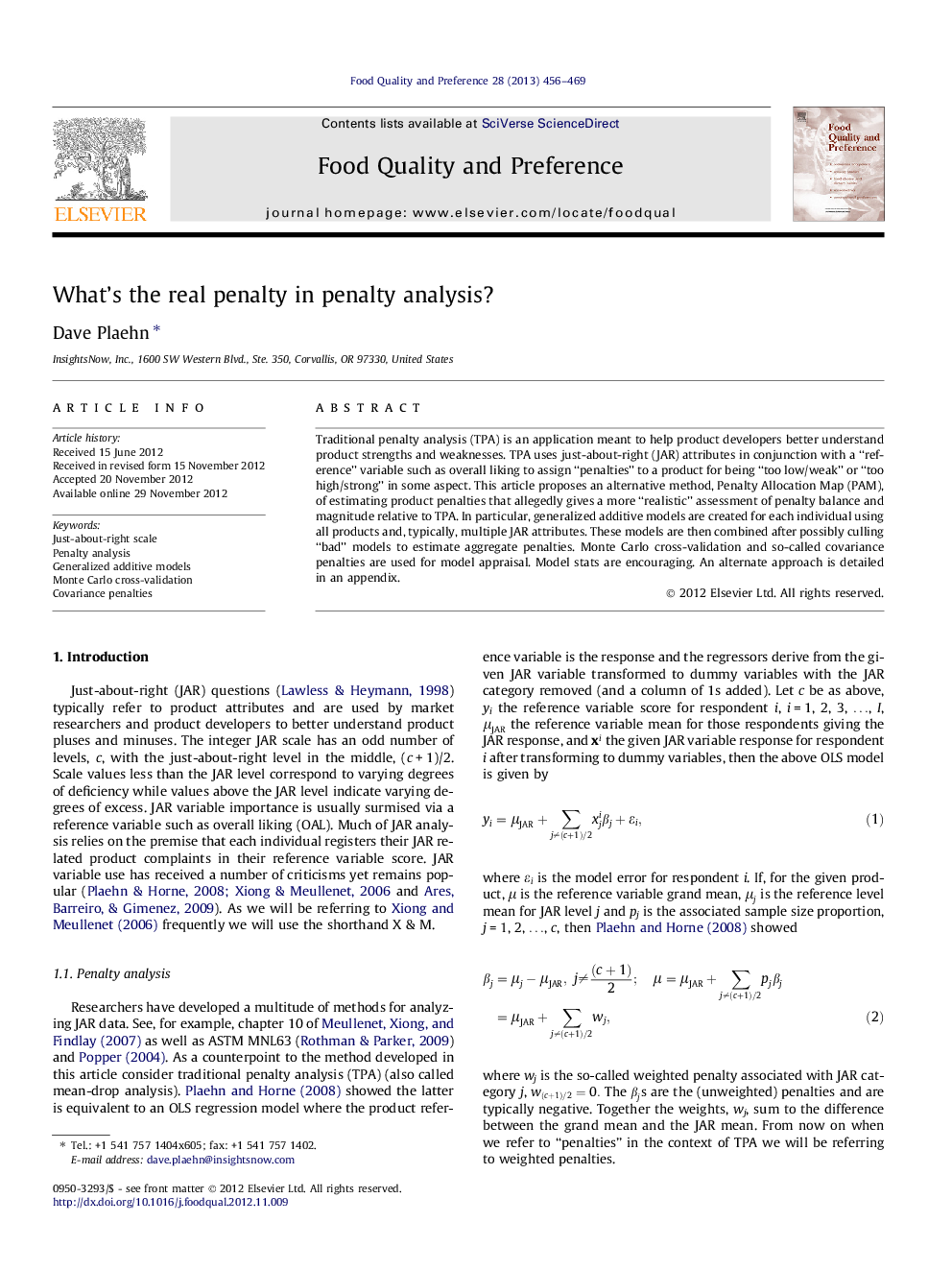| کد مقاله | کد نشریه | سال انتشار | مقاله انگلیسی | نسخه تمام متن |
|---|---|---|---|---|
| 4317547 | 1290601 | 2013 | 14 صفحه PDF | دانلود رایگان |

Traditional penalty analysis (TPA) is an application meant to help product developers better understand product strengths and weaknesses. TPA uses just-about-right (JAR) attributes in conjunction with a “reference” variable such as overall liking to assign “penalties” to a product for being “too low/weak” or “too high/strong” in some aspect. This article proposes an alternative method, Penalty Allocation Map (PAM), of estimating product penalties that allegedly gives a more “realistic” assessment of penalty balance and magnitude relative to TPA. In particular, generalized additive models are created for each individual using all products and, typically, multiple JAR attributes. These models are then combined after possibly culling “bad” models to estimate aggregate penalties. Monte Carlo cross-validation and so-called covariance penalties are used for model appraisal. Model stats are encouraging. An alternate approach is detailed in an appendix.
► Penalties from traditional penalty analysis (TPA) tend to be inflated.
► An alternative approach called Penalty Allocation Map (PAM) is proposed.
► With PAM individual models are made.
► Generalized additive modeling (GAM) provided robust models.
► PAM penalties appear to be reasonable in size.
Journal: Food Quality and Preference - Volume 28, Issue 2, June 2013, Pages 456–469